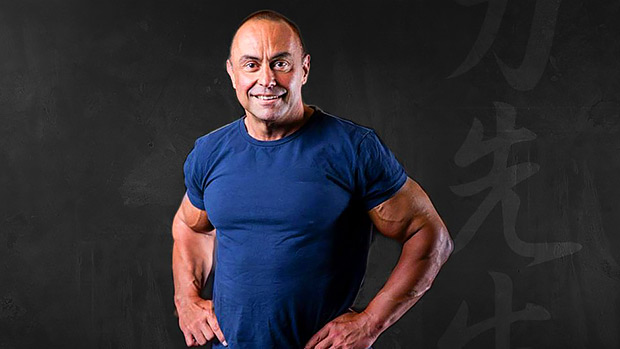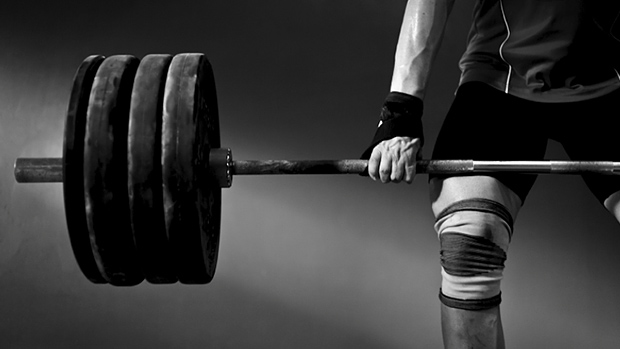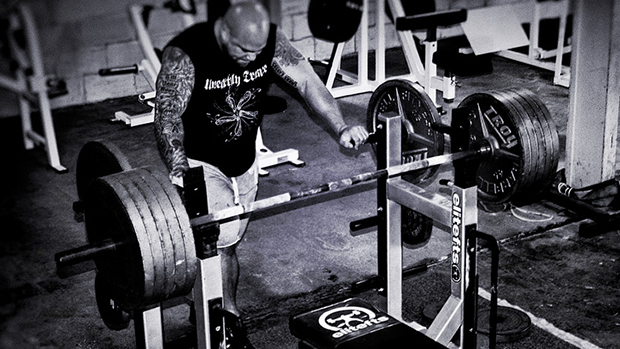For several years, I was the Watson to Strength Coach Charles Poliquin's Sherlock Holmes. I chronicled his theories, revelations and discoveries. I like to think I played a small part in his success but in all probability, guys like Charles don't need any help; they get famous all on their own.
He was undoubtedly the voice of scientific bodybuilding in the 90's. He changed the sport, single-handedly dragging us out, kicking and screaming, from the mind-numbing drudgery of 3 sets of 8.

We were happy to have him join us at Testosterone Magazine when we first began, but a couple of years later, the sirens started to call out to him. His dream had always been to start his own performance center and that's exactly what he did.
Today, the Poliquin Performance Center in Phoenix, Arizona is known throughout the world as the place to be if you want to excel in your chosen sport. But it's been too long since we spoke to him. The bodybuilding world misses him. Hence this interview.
TC: Charles, it's probably been about four years since we spoke. Did you hear about that 9-11 thing? No, no, kidding. In four thousand words or less, what have you been up to the last four years?
CP: Well, I opened up a high performance center in Phoenix. I chose Phoenix because that's a city where all the professional sports teams play–they all come through here sooner or later. Athletes know what Phoenix is like, and it sure is more interesting for the client who is single than Colorado Springs. And of course, the weather permits a lot of year-round track training.
So I've got guys like Adam Nelson, who won a silver medal in shot put and Dwight Philips who won the gold medal in long jump at the Athens Olympic Games, training here. The city attracts a wide variety of athletes, from amateur to pro, so I've got guys in baseball, football and hockey obviously, which is my bread and butter, and Olympic athletes. Now this program is also available to the general public. It is mainly executives who come to benefit from it.
TC: I'm glad things are going well, and I understand you're about to open up some more Poliquin Performance Centers?
CP: We're opening up three more, one in Boston around March 1st; then in Chicago about 2 weeks later; and one more around May in St. Louis.
TC: That's fantastic! So do you run these things or do your interns?
CP: All the guys I've certified before will run them. Art McDermott will run the one in Boston, Mike Bystol runs the one in Chicago, and Nelson Ayotte will head the St-Louis unit. We are also opening a satellite center in Sweden (summers only) that will cater to the Swedish and Finnish hockey players.
TC: Will you actually go to these places and work with athletes at times?
CP: Possibly, I have a lot of athletes in each of those cities anyway. Part of the deal is that I have to go round and ensure quality control. Basically what I do is train all our staff, and then all the guys who've worked for me as contractors will head up the centers.
I have a possible deal coming up where I might be moving to L.A. and opening up another center, at which point I may hand this one off.
TC: I understand you've started an elite trainer/coach certification program. How is yours better than the seemingly thousands that are currently in existence?
CP: Wherever I went to give seminars, people would tell me they were certified in this or that...it got kind of irritating because people would say stuff like, "When you squat, don't allow your kneecaps to go beyond your knee." Well hell, when you walk up the steps you do that every day.
People are so afraid of training...they're so geared towards safety that the type of training they recommend doesn't do anything! Or you have the really obscure certification programs where you drink your own piss as part of the course. I'm not kidding! We gave this seminar in Ireland and that's what a guy told us. We said you have got to be kidding me, and he said, "No, it's part of the course!"
So, I decided I'm going to do a certification program that's based not only on knowledge, but results. Mine is the only one that does that. In order to get a level five certification, you have to have strength-coached an Olympic medalist.
For level 1 and 2, I give you the tools to start producing, but by level 3 you have to get an athlete to compete successfully at the National level. A level 4 requires that you take someone to the International level, and level 5 is the Olympics or World Championships.
I have five level-5 guys.
TC: So, it's quite a thing to be a level 5?
CP: My quickest intern to get to that level was Preston Greene, but he got my home phone number when he was 16 years old! This guy was pretty resourceful. He collected everything I ever wrote. In fact, when I can't find an article I wrote, I ask him and he has a copy. Anyhow, he was involved in four or five Olympic medals in Athens this past year. He is now one of the youngest collegiate Head Strength Coaches in the country.
TC: As far as levels 1 and 2, that's when you have all your hands-on training with them?
CP: Yes. At level 1 and 2, they need to pass the tests, but they don't have to exhibit results like they do with the upper levels.
TC: So level 1 and 2 would make a guy an exceptional personal trainer or college coach?
CP: Correct. That's a very fair assumption. For example, by the time a guy's a level 2, he can write programs and do muscular assessments properly. It takes an intern about a year to complete his level 2, and the cost would be about two thousand dollars.
TC: Let me ask you a tough question. Just how recognized is your certification?
CP: In all reality? Not that recognized...yet. People who come here want the knowledge. However, people who have trained under me find jobs everywhere else because I have a good reputation. The people in the know realize that certifications in the industry are unregulated–guys are certified in kettle bells, you name it. So, when they see someone with a Poliquin Certification, it means something. When an athlete wants to increase their market value, or their height on the podium, they know where to knock.
For example, the Secret Service has asked me to teach at their academy and they want me to show them my program. I can't say it's the official training program of the Secret Service, but obviously it's starting to get some respect and notoriety,
The Canadian army uses it, too.
TC: The Kenyan army?
CP: No, no, the Canadian army. The Kenyans need to put some weight on.
TC: Sorry! Hearing's not as good as it used to be.
CP: I also did some consulting for the US Army. They want to change their physical readiness test. Right now they do these things like sit-ups and whatever–nothing they'd do in combat–so I did some consulting with them on that. The test we propose would have some carryover to Iraq or wherever.
TC: Are you working on any books?
CP: Yeah, a book about strong man training is coming out. I co-wrote it with Art McDermott and it should be coming out in early spring. The market for the book is strength coaches and personal trainers that want to use strongman events as far as conditioning. Things like flipping tires and farmer's walk and all that carry a lot over to sport.
The problem that I have found, from experience, is that you have a lot of strong guys in the weight room, but they do shit in the strongman events. I have two hockey players who had scholarships to big universities. One kid came here, trained all summer with us, and in July he tried to do a strong man event. We had another kid from Montana, but he was a farm boy. He kicked that poor kid from Harvard's ass.
I see it in fighting situations in hockey all the time. For example, you can be a big bench presser but if you have no grip, you lose a lot of fights.
That's why we have evolved more and more to doing strong man stuff; it's more what I call athletic strength.
TC: When I used to train with you, I never saw you do many Olympic lifts. Was that because you were training mostly bodybuilder-types back then?
CP: Yes. We do a lot of Olympic lifting here. The thing about Olympic training is that of all training styles, the Olympic lifts will give you the most transfer to improving your first two steps when you run, and improve your vertical jump. But the problem is, people get carried away with it and think it's going to improve your table tennis.
I strongly believe in what I call "predictor lifts." In other words, for every sport, there are certain key lifts, that once they're performed by the athlete, you can tell how well he'll do in that sport. For example, in bobsleighing, you can add his best power clean, bench press, and front squat and I can tell you how fast he can push a bobsleigh. It's pretty accurate.
Similarly, in shot put, if you can do this much on an incline press, you'll throw this many meters. In the Olympic lifts, what I see is, they correlate with how high you can jump, and how fast you can run in the first five to ten yards, but they're not that correlated with how long you can jump.
TC: The O lifts have experienced a resurgence in the bodybuilding world. The reasoning is that bodybuilders' fast twitch fibers don't often get activated in conventional lifts by doing traditional movements and traditional rep schemes. So, are they a good idea for bodybuilders?
CP: I think if bodybuilders do multiple sets of 6 on Olympic lifts, they should gain more hypertrophy. But they can go as low as 1 rep. I think the main benefit is that it also transfers to slow lifts. For instance, if a guy is doing squats at 400 pounds, and no matter what he does, his squat does not improve, he can just concentrate on the power clean. In a few weeks, his squat will go up, because you cannot do an Olympic lift unless you accelerate, no such thing as a slow tempo O lift.
A lot of bodybuilders, when you look at them–at least the few generations that have actually learned to walk upright–the power snatch will actually correct those postural defects.
TC: Since we were talking about rep schemes, there's a big push in bodybuilding to do a lot fewer reps than what was traditionally advocated. I'm talking about 8 sets of 3 and typically, according to what you used to say at least, that was more or less for strength and not for hypertrophy. What are your thoughts on that?
CP: True, when you're prescribing it for a short time. You can definitely hypertrophy on sets of three, it just takes longer. But the advantage is you get strong at the same time. The thing is that most bodybuilders don't grow because they're too weak. If you do 8 sets of 3 or do cluster training or whatever, you use maximal weights, and your body will learn to recruit high-threshold motor units.
Let's say if a guy can do 250 for 8 in the bench press, and his pecs are at their limit. He can then go on a strength cycle. Let's see, if he does 250 for 8, his max should be about 320. If he goes on a strength cycle and gets his bench up to 360, then when he does his sets of 8, he can now do 280. And because he can use 280, his pecs are going to grow. Because then he has used enough weight, long enough, to stimulate growth.
But look at Olympic lifters, they never do more than 6 reps, but they have huge thighs and traps, because they've done it long enough. What people don't know, the reason muscle hypertrophies is that it's easier for muscle to hypertrophy than it is to recruit more motor units. It's basically the body's laziness, so, if you go and tap into new motor units and go back and do sets of 8 with your new max, you will grow.
Conversely, the opposite is true. You have guys, for example, who go into the weight room and they lift every day, and their lifts have not improved since Jimmy Carter was President, Well, I ask them, "What's your best for 8 reps?" and they say, "I don't know, 250," and I say "Try training with only 8-rep sets and get that max up to 270, and then go back to heavy training."
So if you haven't gained strength in a long while, you have to hypertrophy the fibers.
TC: Probably the most popular article I've been associated with in any way, shape, matter or form, was your article on German Volume Training about 10 years ago in Muscle Media 2000. Have you come up with any new techniques that you use on your guys that might have the same sort of impact on the weight-training world?
CP: Here's one thing that I figured out, I've been reading a lot about Chinese medicine for the last 10 years, and in Chinese medicine they always talk about the elements. If you look at it, it actually applies to athletes.
They used to say, in the early 70's, there are two types of guys who can train; you have a guy who reacts to volume, and a guy who reacts to intensity. And then, Anatoly Bondarchuk, who used to coach elite level hammer throwers, in fact had Olympic Gold medalists for at least 20 years in a row, said, no, there are three types of athletes: volume, intensity and then there's a variation type of guy who responds to changing things around. His training system produced the top 6 hammer throwers of all time.
And me, who's trained people from biathlons to bobsleds, what I've found is that there are five types of people, and this is where it ties into Chinese medicine. There are people who need extremely high volume, and even though it sounds paradoxical, they can handle high intensity at the same time, so the average guy like that, could handle 10 sets of 3, and every set of 3 would be at 90% of 1RM. That's what we call the "Fire" type. These are guys like Adam Nelson who would be very good at the shot put.
The next element is the Wood guy who needs to train high intensity, but doesn't tolerate volume really well. This is a guy who loved the first two workouts he did with me, but then complained of achy joints, fatigue, mono, etc. after the third. What we do know is to identify the type of person they are, and change their loading parameters before they get overtrained.
Then there's a type that we call a whore type, that basically....
TC: Excuse me. What do you call him?
CP: Whore (laughing)
TC: Is that one of the Chinese elements?
CP: No, no, basically, he can do anything; a guy who can do high volume–you can beat the hell out of him with volume for 3 weeks, and then beat the hell out of him with intensity for 3 weeks. And the other two elements are wimps and they're not worth training. I should not call them that, but they are not suited for power sports; they're suited for swimming, etc. They have a very low tolerance for strength training. For most of the readers of T-Nation, they fall within the first three types.
We can figure all this out with a computer. For example, we have a guy who is 242, 17% body fat, football player, and once we figured out what he was, he showed up at training camp at 266 at 6% body fat. And that's the first time he's gotten those results. All his teammates were asking him if he were training for the Mr. Olympia, blah, blah, blah.
And actually he had low Testosterone. The way we trained that guy was one workout was at 100% of volume; the second workout was 80% of volume–reducing the number of sets but increasing the intensity–and the 3rd workout, 40% of volume. So for this guy, only two workouts out of three are somewhat hard.
Make sure to read Part 2 of our interview with Charles Poliquin next week. We'll be talking about some wildly diverse topics; stuff ranging from intravenous vitamin drips and hypobaric chambers, to using licorice cream to raise Testosterone levels.





